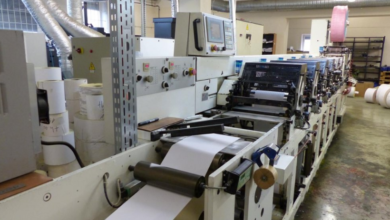The Paperless Office Dream: Realising It with a Modern Document Management System

In an age where digital innovation steers the course of industries, the prospect of a paperless office has gained considerable traction. The march towards this ecological and economical goal is particularly pronounced within sectors that are historically inundated with paperwork, such as construction. Implementing a document management system for the construction industry symbolises a transformative step, offering not just environmental perks, but also remarkable efficiency.
Document Overload in the Construction Sector
Construction enterprises deal with a formidable amount of documents – from architectural plans and permits to compliance paperwork and contracts. Managing such quantities of paperwork can be a daunting task. Document disarray could lead to costly mistakes, project delays, and inefficiencies, costing businesses both time and resources. The integration of technology, specifically through a modern document management system, is a strategic approach to mitigate these challenges.
Moving Towards a Paperless Reality
The notion of a paperless office is hardly new but making it a reality requires determination and the right tools. Today’s construction industry stands at the cusp of this transition, embracing the digital means necessary to reduce its dependence on physical documents. Employing modern software solutions paves the way for this transition, shifting the paper-based documentation to a digital framework that not only promises a decluttered workspace but also expedites information retrieval and sharing.
Key Components of a Document Management System for Construction
Modern document management systems for the construction industry are designed with the complexities of the field in mind. Such systems ensure secure storage, easy access, and real-time collaboration on documents. They consolidate all forms of data, including drawings, specifications, and correspondence, into a centralised location that is both accessible and secure for all stakeholders involved in the construction process.
Integrated Construction Site Planning Software
Working within the digital domain of a paperless office goes beyond mere document storage. A comprehensive system integrates tools such as construction site planning software, allowing for the seamless planning and execution of projects. This software supports the various facets of site management, offering project managers and teams accurate and immediate access to the information they require.
Advanced Construction Finance Management Software
The financial management aspect of construction, which involves procurement, cost control, and budgeting, is equally significant and benefits immensely from digitisation. Modern construction finance management software enables real-time tracking of expenses, automation of invoice processing, and efficient budget management. When allied with document management, this software streamlines the financial operations, thus minimising errors and fostering transparency.
Advantages of a Paperless Document Management System
The shift to a paperless document management system entails numerous advantages. Primarily, it leads to greater efficiency, as the time spent on searching, retrieving, and reproducing documents is considerably reduced. Furthermore, the integration of various functionalities through a single software platform ensures that every team member is updated with the latest work progress and document versions, which significantly improves collaboration and decision-making.
From an ecological standpoint, reducing paper consumption contributes to sustainability efforts. The environmental footprint of construction projects diminishes with less paper waste and lower energy consumption associated with document handling. Moreover, digital documents are more resilient to damage or loss, ensuring that vital records are preserved over time.
On top of practical benefits, the data analytics enabled by a paperless document management system provides invaluable insights into workflows and productivity, helping organisations to benchmark their practices against industry standards and continually refine their processes.
Challenges in Realising the Paperless Dream
While there are compelling incentives to go paperless, challenges persist. Resistance to change within corporate culture can be significant, with employees accustomed to paper-based processes being hesitant to adapt. Moreover, transitioning to a fully digital system demands an upfront investment in both software and training. Adequate resources must be allocated to ensure the smooth adoption of new practices and technologies.
See Also: How Recruitment Automation Software Is Transforming Candidate Engagement
Implementing the Transition Strategically
To overcome these obstacles, a strategic approach should be taken, beginning with the selection of a suitable document management system. The solution should be not only robust and comprehensive but also user-friendly to encourage widespread adoption. Leaders should champion the change, providing clear communication about the benefits and support during the transition phase.
Conclusion
The dream of a paperless office, particularly for document-laden industries like construction, is more achievable today than ever before. With sophisticated document management systems at their disposal, organisations can embrace a future where data flows without the crutch of paper. The integration of construction-specific software, such as document management, site planning, and finance management, can become the nexus of a construction enterprise’s operations, heightening its precision, efficiency, and sustainability. While challenges exist, strategic implementation and leadership can guide a company towards a brighter, paperless future.
Understanding the intrinsic connection between digital management tools and optimal construction workflow is crucial. When a paperless office dream is actualised, not only does it signify an upgrade in day-to-day operations, but it fosters an environment that prioritises efficiency and environmental consciousness – all cornerstone attributes of a thriving and responsible construction industry in the modern world.




